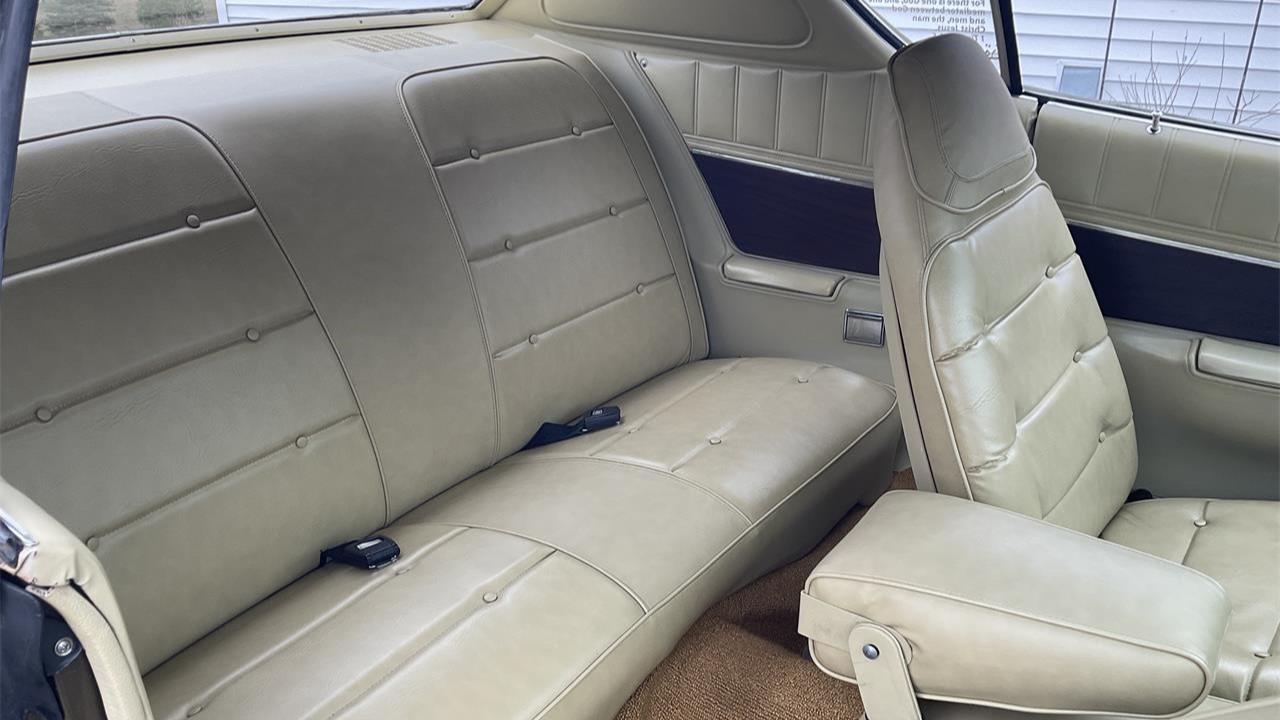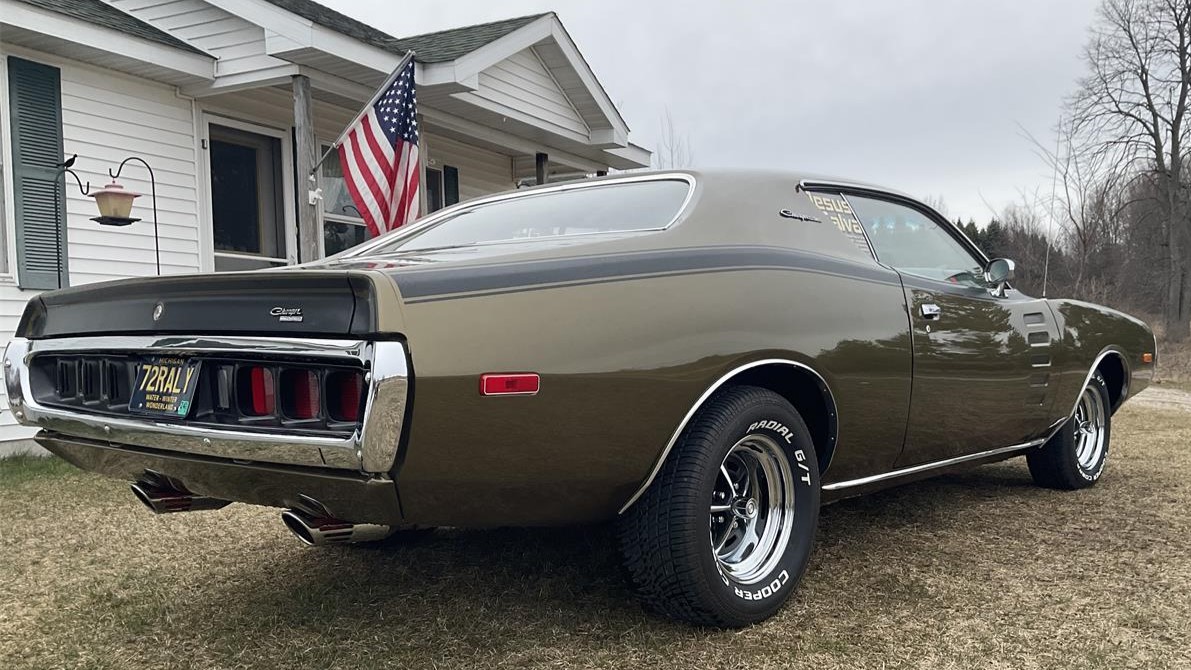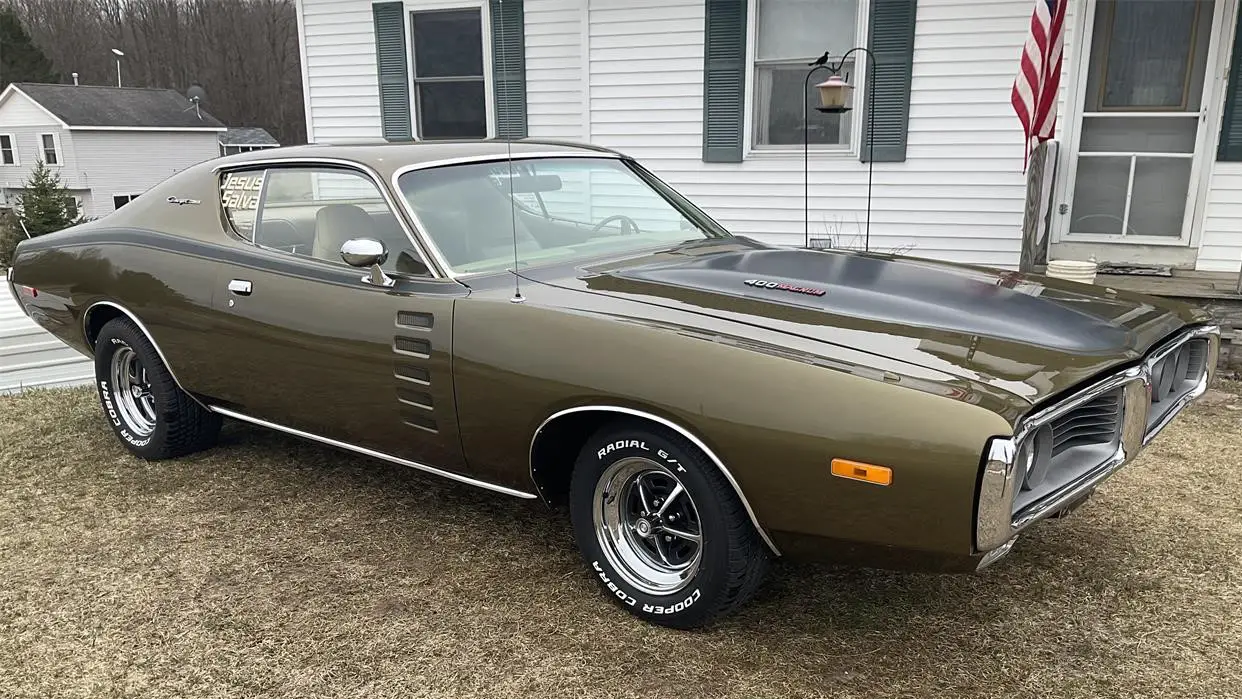The Federal government mandated all manufacturers lower the compression of their engines for 1972 to allow for the use of unleaded fuel. Dodge also used the opportunity to reimagine its sporty lineup. Our Pick of the Day, a 1972 Dodge Charger Rallye, is the perfect example of how Dodge navigated the darkness. It is listed for sale on ClassicCars.com by a private seller in Traverse City, Michigan. (Click the link to view the listing.)
In 1967, Dodge created the Coronet R/T, the brand’s first muscle car following the Pontiac GTO’s formula. Standard was a 440 Magnum rated at 375 horsepower. It was joined in 1968 by the 440-powered Charger R/T, which was based on the same platform but was more of a specialty car. That was the year it, the Coronet R/T, the Dart GTS, and the Super Bee (a midyear addition) formed the Scat Pack, a team of performance cars with bumblebee stripes. Another R/T joined the Scat Pack in 1970, the Challenger R/T, making three R/T models.

For 1971, only the Charger R/T and Challenger R/T were left, but for 1972 Dodge adjusted its marketing plans and replaced the R/T with the Rallye. In the case of the Charger, the A57 Rallye package (available for the Charger Coupe or Hardtop) included both front and rear sway bars, F70 x 14-inch whitewalls, Rallye gauge cluster, louvered taillights (like on the 1971 Charger 500 and R/T, though blacked out), simulated door louvers (similar yet different to what the 1971 Charger R/T had), a hood with power bulge, and a dark Astrotone grille.

“The [Rallye] Package makes driving any Charger more fun without the need for larger engines,” claimed Dodge. Perhaps that’s why Dodge went from the R/T to the Rallye? While the Charger R/T had been synonymous with the 440 Magnum, the Charger Rallye came standard with a 318 two-barrel, with a 340 four-barrel, 400 two- and four-barrel, 440 four-barrel, and 440 Six Pack being available for performance enthusiasts. The 440 Six Pack was cancelled very, very early in production (it is estimated fewer than 10 were built), leaving the 280-horse 440 as the top dog.

Only 460 Charger Rallye Coupes and 3,431 Rallye Hardtops were built for the U.S. market in 1972. Another 2,025 Charger Hardtops were built with the 400 four-barrel (code P). While there isn’t information on how many Rallyes were built with the 400 like this 1972 Charger Rallye Hardtop, you can bet it wasn’t many. Painted “GY9” Dark Gold with the optional “E6Y3” gold bucket seat interior with fixed center cushion and folding armrest, it’s about as Earth tone-y as one can get for the era. The seller says it’s a numbers-matching car that was restored and maintained by the previous owner and his mechanic. “Depress accelerator to set choke, tap pedal to take off fast idle, always starts easy,” adds the seller. “[Automatic] transmission shifts excellent.” Note the flat black decal on the rear of the trunklid – that’s something specific to the Rallye package.

Aside from the wrap-around stripe that had its origins in the 1971 Charger R/T, this Rallye is a nice representative of Mopar performance before things truly went to pot. For $43,000, you can enjoy authentic 1970s styling with a hi-po car that can handle today’s gas.
Click here for this ClassicCars.com Pick of the Day.

Comments are closed